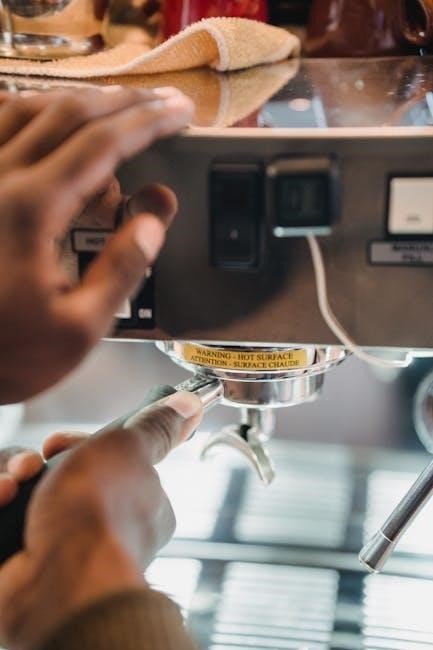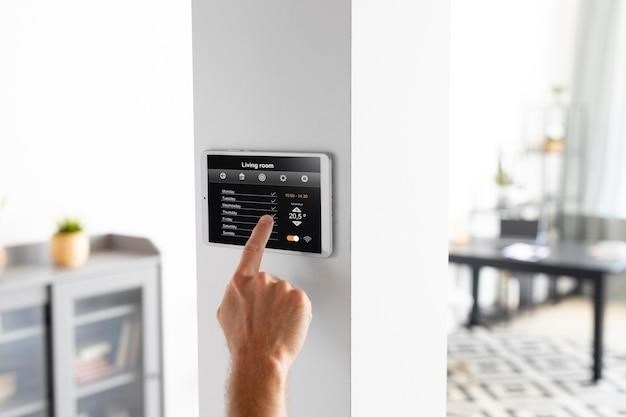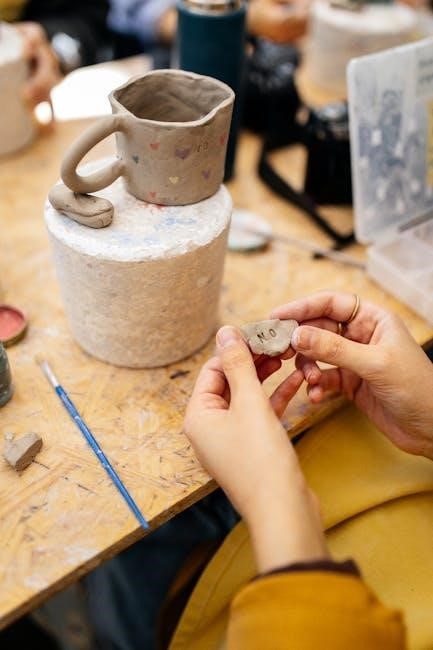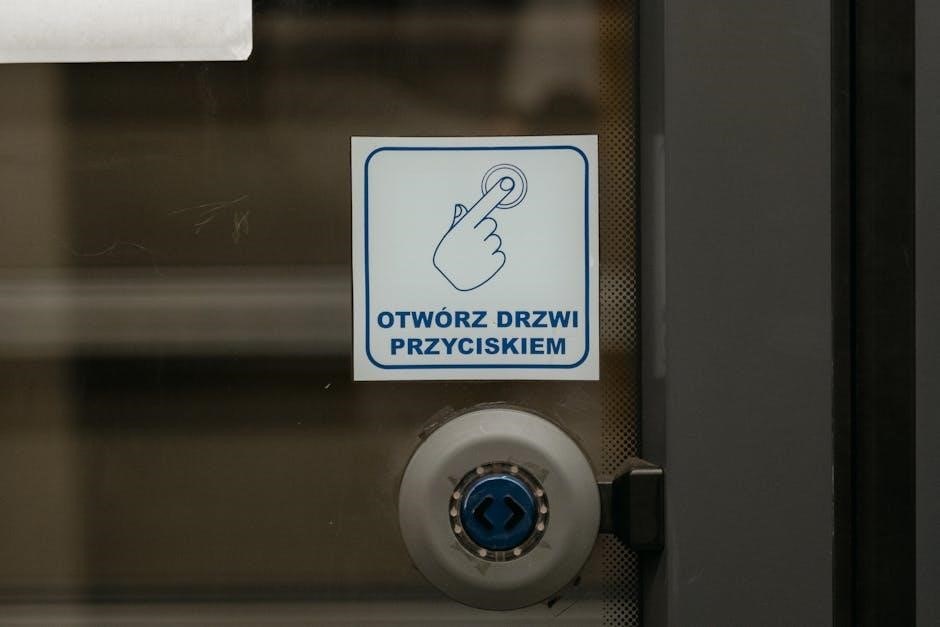Manual surface grinding machines are essential tools for smoothing metal surfaces, offering precision and versatility. They are widely used in manufacturing, automotive, and aerospace industries for finishing parts, ensuring high accuracy and surface quality, making them a cost-effective solution for various industrial needs.
1.1 Definition and Purpose
A manual surface grinding machine is a versatile tool designed to smooth and finish surfaces by removing small amounts of material. Its primary purpose is to achieve high precision and accuracy in grinding flat or profiled surfaces. These machines are widely used in industries like automotive, aerospace, and manufacturing for tasks such as sharpening tools, polishing metal parts, and ensuring surface quality. They are cost-effective solutions for businesses needing precise control over grinding operations without the need for advanced automation.
1.2 Brief History and Evolution
Manual surface grinding machines have evolved significantly since their inception in the mid-20th century. Initially used for basic metalworking, they were refined to offer greater precision and control. The development of advanced grinding wheels and improved mechanical designs enhanced their versatility. Over time, these machines became indispensable in various industries, with modern versions incorporating better materials and techniques, ensuring higher accuracy and efficiency in surface finishing tasks.
1.3 Applications in Various Industries
Manual surface grinding machines are widely used across industries for precise material finishing. In aerospace, they refine aircraft components, while in automotive, they ensure engine parts meet tight tolerances. Manufacturing relies on them for polishing dies and molds, and tool-making industries use them to craft precision tools. Their versatility extends to medical equipment production, where smooth surfaces are critical. Additionally, they are employed in metal fabrication shops for deburring and surface preparation. These machines are essential for achieving high-quality finishes in diverse industrial settings, making them indispensable for modern manufacturing processes.
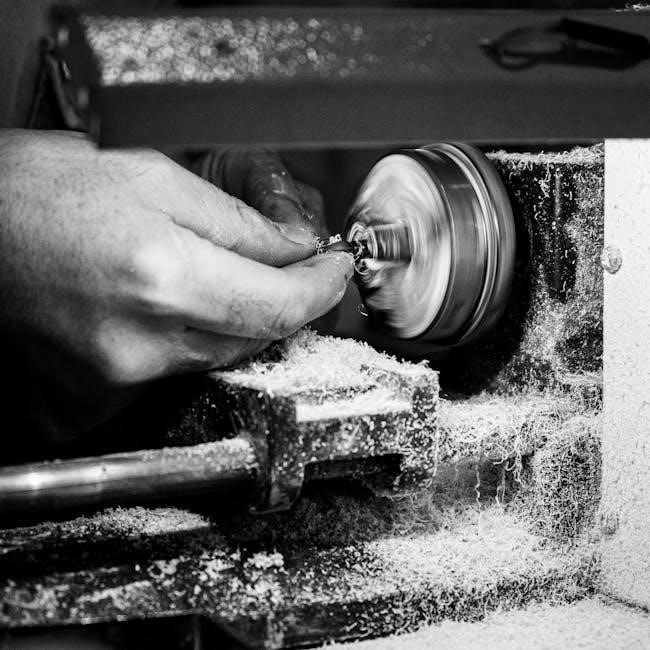
Types of Surface Grinding Machines
Surface grinding machines are categorized into manual and automatic types, based on operation, and portable or bench grinders, based on size and portability for precise grinding tasks.
2.1 Manual vs. Automatic Surface Grinders
Manual surface grinders require operator involvement to control the grinding process, offering precision and adaptability for small-scale tasks. Automatic grinders, however, operate programmatically, ensuring high efficiency and consistency for large-scale production. Manual grinders are cost-effective and ideal for workshops with varying demands, while automatic machines excel in high-volume manufacturing due to their speed and minimal human intervention. The choice depends on production scale, budget, and the need for customization versus mass production efficiency.
2.2 Portable vs. Bench Surface Grinders
Portable surface grinders are lightweight, compact, and designed for on-site use, making them ideal for grinding irregular or hard-to-reach surfaces. Bench surface grinders, however, are stationary machines mounted on workbenches, offering greater stability and power for precise grinding tasks. Portable grinders are versatile and convenient for fieldwork, while bench grinders are better suited for workshops requiring consistent and accurate results. The choice between them depends on the workspace, task requirements, and the need for mobility versus stationary precision.
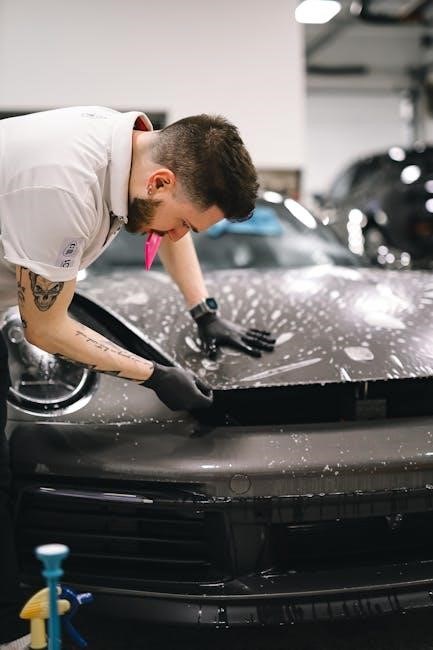
Advantages of Manual Surface Grinding Machines
Manual surface grinding machines offer cost-effectiveness, precision, and versatility, making them ideal for small-scale and precise grinding tasks. They are easy to operate and maintain, providing flexibility in various applications while ensuring high-quality finishes.
3.1 Cost-Effectiveness
Manual surface grinding machines are highly cost-effective, offering a lower initial purchase price compared to automatic grinders. They also require less energy to operate and maintain, reducing overall production costs. Their simplicity in design minimizes maintenance expenses and extends longevity. Additionally, manual grinders are ideal for small-scale operations, providing a budget-friendly solution without compromising on performance. This makes them a practical choice for workshops and industries with limited resources or specific grinding needs, ensuring affordability without sacrificing quality.
3.2 Precision and Accuracy
Manual surface grinding machines offer exceptional precision and accuracy, making them ideal for intricate tasks. Skilled operators can achieve tight tolerances and smooth finishes by controlling the grinding process meticulously. The manual nature allows for precise adjustments, ensuring consistent results. These machines are particularly effective for small, complex components where exact dimensions are critical. Proper technique and attention to detail enable high-quality outcomes, making manual grinders a reliable choice for applications requiring utmost accuracy and surface finish excellence.
3;3 Versatility in Operations
Manual surface grinding machines are highly versatile, accommodating various materials such as metals, plastics, and composites. They can perform multiple grinding operations, including surface, edge, and bevel grinding, with ease. The ability to adjust grinding wheels and workholding fixtures allows operators to tailor the machine to specific tasks. This adaptability makes manual grinders suitable for workshops, small manufacturing units, and tool rooms, where diverse grinding needs arise frequently. Their portability and flexibility enhance their utility across different industrial applications and settings.
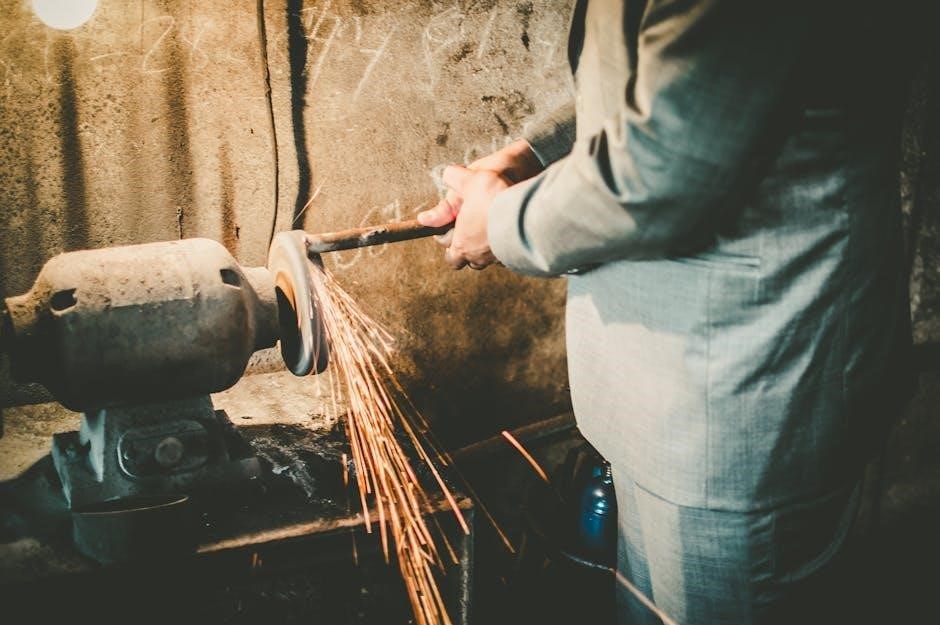
Disadvantages of Manual Surface Grinding Machines
Manual surface grinding machines are time-consuming, requiring skilled operators and frequent manual adjustments. They are less efficient for large-scale production compared to automatic grinders, limiting their scalability.
4.1 Time-Consuming Process
Manual surface grinding machines require significant time due to the need for precise, hands-on operation. Unlike automated systems, they rely on skilled operators to adjust settings, position workpieces, and monitor progress. This manual intervention slows down production, especially for complex or large-scale projects. Additionally, frequent stops for wheel dressing and part inspection further extend the process. As a result, these machines are less efficient for high-volume tasks, making them more suitable for small-batch or specialized grinding operations where time constraints are less critical.
4.2 Requirement for Skilled Operators
Manual surface grinding machines demand highly skilled operators to achieve precise results. Operators must master techniques like accurate workpiece positioning, feed rate control, and maintaining consistent grinding pressure. Improper handling can lead to uneven surfaces, damaged materials, or machine wear. The operator’s expertise ensures optimal performance, safety, and quality, making extensive training and experience essential. This dependency on human skill limits productivity and increases labor costs compared to automated alternatives.
4.3 Limited Capacity for Large-Scale Production
Manual surface grinding machines are less efficient for large-scale production due to their reliance on manual operation. They lack the automation needed for high-volume tasks, resulting in slower throughput. While suitable for small batches or precise work, they struggle to meet the demands of industrial-scale manufacturing. This limitation makes them less favorable for businesses requiring rapid, consistent production, highlighting the need for automated alternatives in such environments.
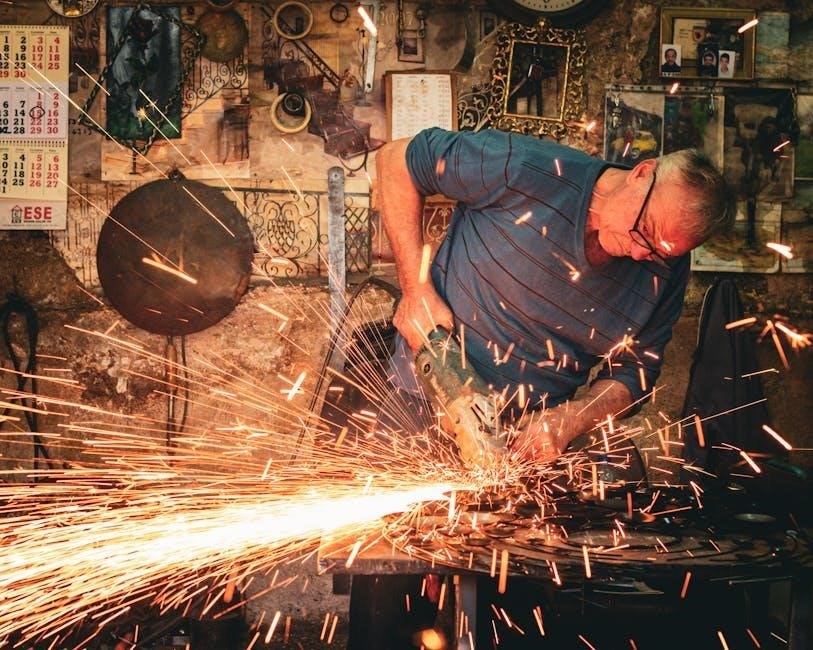
How to Use a Manual Surface Grinding Machine
Using a manual surface grinder involves preparing the machine, securing the workpiece, and applying controlled grinding motions. Ensure proper coolant application and maintain consistent feed rates for optimal results.
5.1 Setting Up the Machine
Setting up a manual surface grinder involves several key steps. First, ensure the machine is level and firmly secured to the workbench to prevent vibration. Next, inspect the spindle and chuck for cleanliness and proper alignment. Select and install the appropriate grinding wheel for the material being processed. Tighten the wheel using the correct flange and wrench. Check the wheel balance and run it at the recommended RPM. Finally, position the workpiece securely on the magnetic chuck, ensuring it is properly aligned with the grinding wheel.
5.2 Grinding Process and Techniques
The grinding process begins by starting the machine and allowing the wheel to reach full RPM. Hold the workpiece firmly on the magnetic chuck, ensuring it is flat and securely positioned. Apply consistent, light pressure to avoid uneven grinding. Use a back-and-forth or lateral motion, maintaining contact with the wheel. Periodically check the workpiece for flatness using a straightedge. Adjust the table height as needed to maintain proper contact. Keep the grinding wheel dressed to ensure optimal performance and surface finish. Always use coolant or lubricant to prevent overheating and extend tool life.
5.3 Dressing the Grinding Wheel
Dressing the grinding wheel is essential to maintain its efficiency and precision. Start by turning on the machine and allowing the wheel to reach full RPM. Use a diamond dresser or a silicon carbide stick, holding it firmly against the wheel’s edge. Move the dresser across the wheel’s surface in a consistent, controlled motion to remove dull grains and bond material. Apply light to moderate pressure, depending on the wheel’s hardness. After dressing, turn off the machine and clean any debris. This process ensures the wheel remains sharp and produces consistent results.
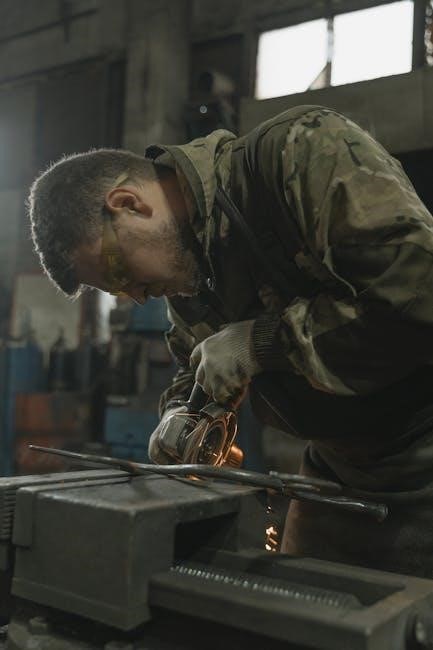
Maintenance and Care
Regular maintenance ensures optimal performance and longevity. Clean surfaces, lubricate moving parts, and check for wear. Store the machine in a dry, protected environment to prevent damage.
6.1 Cleaning the Machine
Cleaning is essential for maintaining the manual surface grinder’s efficiency. Regularly wipe down surfaces with a solvent to remove metal chips and dust. Use compressed air to clear debris from crevices. Pay special attention to the grinding table and spindle areas, ensuring no residue interferes with operations. After cleaning, dry the machine thoroughly to prevent rust. A clean machine reduces contamination risks and ensures precise grinding results. Consistent cleaning habits prolong the lifespan of the equipment and maintain workplace safety standards, preventing potential hazards from accumulating debris.
6.2 Lubrication of Moving Parts
Regular lubrication of moving parts is crucial for maintaining the performance and longevity of a manual surface grinding machine. Apply high-quality grease or oil to components like the spindle, table, and guides to reduce friction and wear. Follow the manufacturer’s recommendations for the type and frequency of lubrication to ensure optimal operation. Avoid over-lubrication, as it can attract dust and require more frequent cleaning. Proper lubrication prevents overheating and extends the life of the machine, ensuring smooth and precise grinding operations.
6.3 Storage and Protection
Proper storage and protection are essential to maintain the functionality of a manual surface grinding machine. After cleaning, store the machine in a dry, cool place to prevent rust and corrosion. Cover the machine with a protective cover to shield it from dust and debris. Ensure the grinding wheel is securely stored to avoid damage. Regularly inspect stored parts for signs of wear or moisture. Protecting the machine during storage ensures it remains in optimal condition for future use and prevents costly repairs.
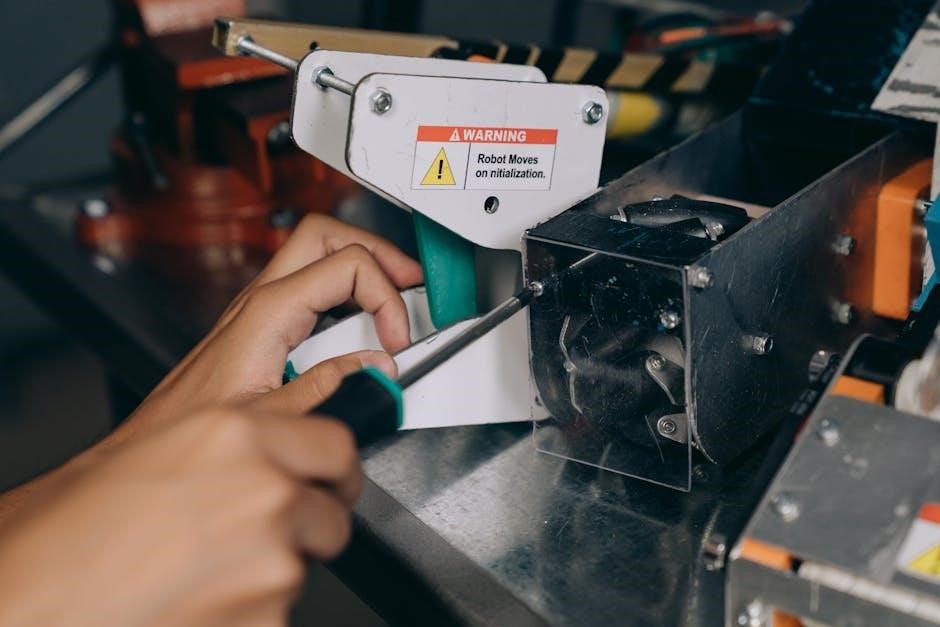
Buying Tips for a Manual Surface Grinder

When purchasing a manual surface grinder, consider performance needs, workspace, and precision requirements; Evaluate reliability, safety features, and brand reputation. Ensure it fits your budget and operational demands.
7.1 Budget and Cost Considerations
When selecting a manual surface grinder, budget and cost considerations are crucial. Assess initial purchase price, maintenance, and accessory expenses. Compare models to find the best value for your investment. Consider the machine’s size, capacity, and material compatibility to ensure it meets your needs without overspending. High-quality grinders from reputable brands may cost more but offer durability and precision. Balance your budget with long-term performance and reliability to make an informed decision.
7.2 Size and Capacity Requirements
Assessing the size and capacity of a manual surface grinder is essential to ensure it matches your workspace and project demands. Consider the machine’s physical dimensions to fit your workshop or bench. Evaluate the table size, travel length, and spindle power to handle the maximum material size you typically work with. Ensure the grinder’s capacity aligns with the thickness and type of materials you process. Portability and weight are also factors if you need to move the machine frequently. Choose a grinder that balances your current needs with potential future requirements.
7.3 Brand and Quality Reputation
When selecting a manual surface grinder, prioritize brands with a strong reputation for quality and durability. Reputable manufacturers often provide machines with superior craftsmanship, reliable performance, and longer lifespans. Look for brands that adhere to international quality standards and certifications. Reading customer reviews and seeking recommendations can help identify trustworthy brands. While premium brands may come at a higher cost, they often deliver better value in the long run through consistent performance and reduced maintenance needs.
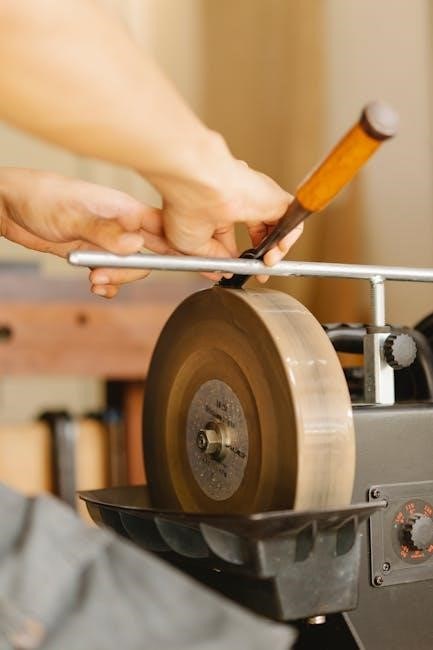
Safety Precautions
Ensure a clean workspace, proper training, and adherence to safety guidelines when operating manual surface grinding machines. Regular inspections and maintaining machine condition are crucial to prevent accidents.
8.1 Personal Protective Equipment (PPE)
Wearing proper PPE is essential when operating a manual surface grinding machine. This includes safety glasses, face shields, gloves, and hearing protection to prevent injury from flying particles, sparks, and noise. A dust mask or respirator may also be necessary to avoid inhaling airborne debris. Ensure all PPE is in good condition and properly fitted to provide optimal protection. Additionally, wear closed-toe shoes or steel-toe boots to safeguard feet from heavy objects. Always prioritize PPE to maintain safety and comply with workplace safety standards;
8.2 Workspace Preparation
Proper workspace preparation is crucial for safe and efficient manual surface grinding. Ensure the work area is clean, dry, and free from debris to prevent accidents. Secure the machine firmly to a stable surface to avoid vibration or movement during operation. Keep tools and materials within easy reach to minimize distractions. Proper lighting is essential for clear visibility of the workpiece. Remove any loose items or obstructions nearby to maintain a clutter-free environment. Ensure adequate ventilation to reduce dust and fumes, promoting a safer working atmosphere.
8.3 Handling Hazards and Emergencies
When operating a manual surface grinding machine, it’s crucial to be prepared for potential hazards and emergencies. Always ensure the machine is equipped with protective guards to prevent injury from flying debris. In case of an emergency, such as a grinding wheel rupture, immediately shut off the power and evacuate the area if necessary. Keep a fire extinguisher nearby to address sparks igniting flammable materials. Train operators on proper shutdown procedures and first aid techniques for minor injuries. Regular machine maintenance can help prevent malfunctions, and having an emergency response plan in place is essential for quick, effective action.
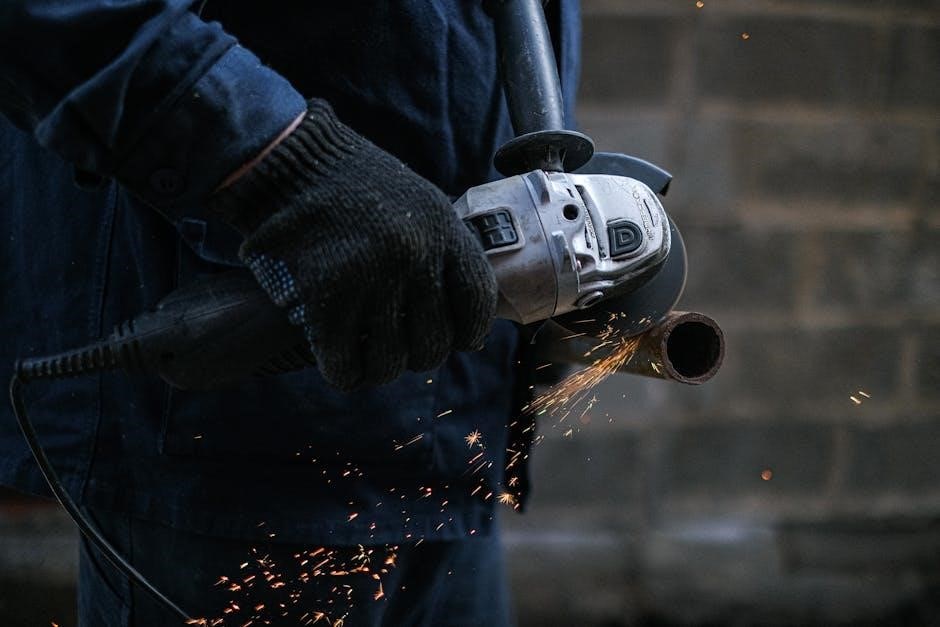
Comparison with Automatic Surface Grinders
Manual surface grinders offer cost-effectiveness and precision for small-scale tasks, while automatic grinders excel in speed and scalability for large production, though at a higher cost.
9.1 Cost Comparison
Manual surface grinding machines are generally more cost-effective than automatic grinders, with lower purchase and maintenance costs. They are ideal for small-scale operations, as they reduce initial investments and operational expenses. Automatic grinders, while more expensive upfront, offer long-term savings through increased efficiency and scalability. For businesses with high-volume production needs, automatic grinders justify their higher costs over time. Manual grinders remain the budget-friendly choice for workshops prioritizing affordability without compromising on precision for smaller tasks.
9.2 Efficiency and Productivity
Manual surface grinding machines are less efficient compared to automatic grinders, as they require constant operator involvement, slowing down production in high-volume tasks. Automatic grinders excel in productivity, handling large-scale operations with minimal supervision, thus increasing output significantly. However, manual grinders offer precision and control for intricate tasks, making them efficient for small-scale or specialized jobs. The choice depends on production needs, with manual grinders being ideal for workshops requiring flexibility and automatic grinders suiting industries prioritizing high-speed output and scalability.
9.3 Scalability for Industrial Needs
Manual surface grinding machines are not scalable for large industrial needs due to their reliance on manual operation, making them unsuitable for high-volume production. Automatic grinders, however, are designed to handle mass production, offering scalability and consistency in industrial settings. Manual grinders lack the capacity to process large quantities efficiently, while automatic machines can be integrated into production lines for continuous operation. This makes automatic grinders far more suitable for industries requiring high output and scalability, whereas manual grinders are better suited for small-scale or specialized tasks.
